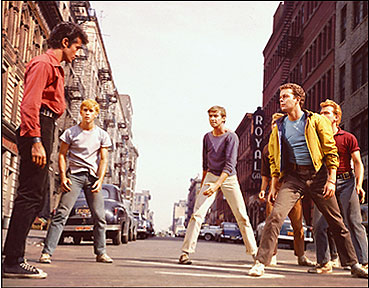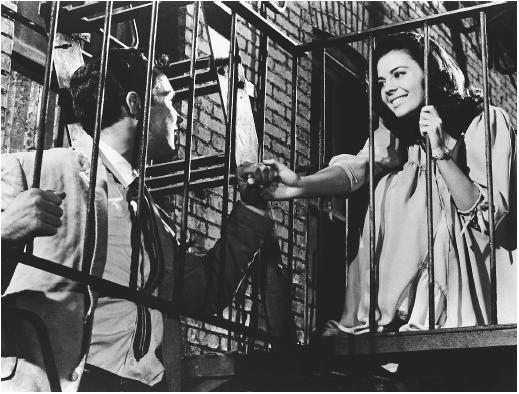The 1961 film version of West Side Story--one of the greatest musicals ever--continues to stand out in history as one of the most original and influential films of all time. From the timeless look of the Super Panavision 70 film and cinematography by Daniel Fapp, to the emotional and beautiful play book by Leonard Bernstein and Stephen Sondheim, West Side Story is an incredible experience for film lovers and musical fanatics alike.

Based on The Tragedy of Romeo and Juliet(arguably Shakespeare's most famous work), West Side Story tells the story of two rival gangs fighting over the territory of the west side of Manhattan: The Italian-American Jets versus the newly immigrated Puerto Rican Sharks. Within the tight knit groups grew the doomed love of Tony and Maria complete with a cast of unforgettable characters with classic 60's names such as Riff, Ice, Baby Jon, Chino, and Bernardo.

While the basic storyline is no surprise, the film version of West Side Story makes a significant impact on the audience on more levels than just the tragic level of lost love. Through numbers like "Gee, Officer Krupke" and "Cool", we begin to understand the internal pain and heartache of lost youths. The Jets thrive on loyalty and manhood in the wake of not wanting to face their own identity crises. Tony walks away from the gang, but still wants to support his second family within the gang. The casting of Russ Tamblyn, Tucker Smith, and Eliot Feld is perfect for balancing the love of the Jets as family and the fragility of their internal insecurities.

On the opposite side of the chain-link playground, the plight of the Sharks as shown through numbers such as "America" and "A Boy Like That" showed a still very closed minded film audience the hardships of immigration and racial discrimination within the so called "Land of the Free". As Bernardo and the rest of the Sharks are kicked out of Doc's store by Lieutenant Schrank whistling "My Country Tis Of Thee", the audience is hit with the feeling of disgust for the law, not the feuding gangs and their concealed weapons.
Bernstein's score leaps off of the screen with the help of Jerome Robbins' jazz inspired choreography filtered through glorious technicolor. While the "fight scenes" can't really qualify as violent or scary, they are filled with tension and beauty. You believe the blood thirsty rivalry (even though leg lifts and plies aren't usually mentioned on the 11 o'clock news after a gang fight).
West Side Story was considered "culturally significant" by the Library of Congress and preserved in 1997 for future generations. A film is not just considered special because it won Best Picture (1961), it is important because it teaches us about ourselves; our prejudices, our loyalties, our compassion, and our society. While it is a perfect time capsule for the early 1960's, the themes are universal and the production is timeless.




